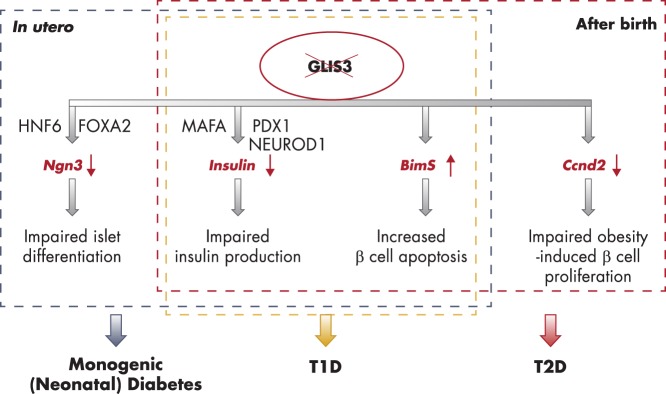Figure 5.
Multifaceted role of GLIS3 in diabetes. In utero, GLIS3 controls islet differentiation by transactivating Ngn3, synergistically with HNF6 and forkhead box A2 (FOXA2, also known as HNF3B or transcription factor 3B [TCF-3B]). Loss-of-function mutations or ablation of Glis3 cause impaired islet differentiation and NDM. After birth, GLIS3 predominantly controls insulin gene transcription, cooperating with MAFA, PDX1, and NEUROD1. GLIS3 is also required for obesity-induced β-cell proliferation and compensatory β-cell mass expansion by transactivating Ccnd2. In addition, GLIS3 plays a protective role for β-cell survival, possibly by regulating BimS. Therefore, impairment of GLIS3 function also plays a key role in the development of T1D and T2D. This figure summarizes the pathways by which ablation, loss-of-function mutations, or functional impairment of GLIS3 cause NDM, T1D, and T2D. Pathways in the blue rectangle take place in the developing pancreas in utero and underlie monogenic NDM; pathways in the yellow square and the red rectangle pertain to the postnatal β-cell and contribute to the development of T1D and T2D, respectively.

